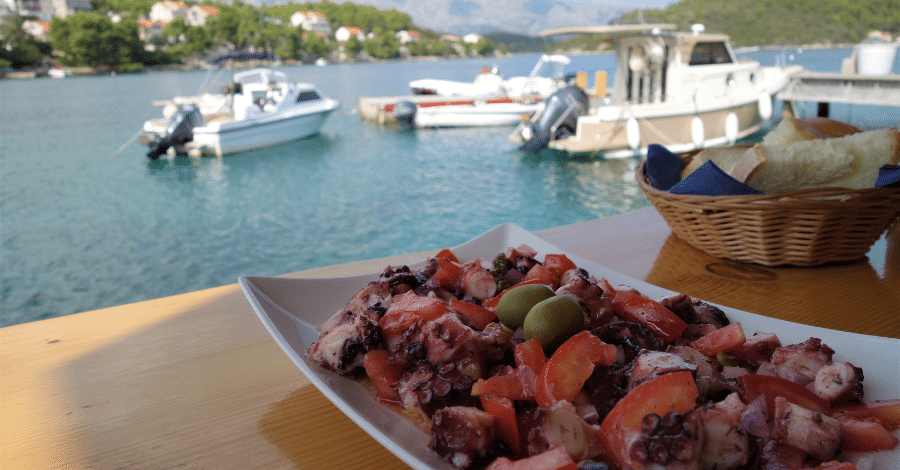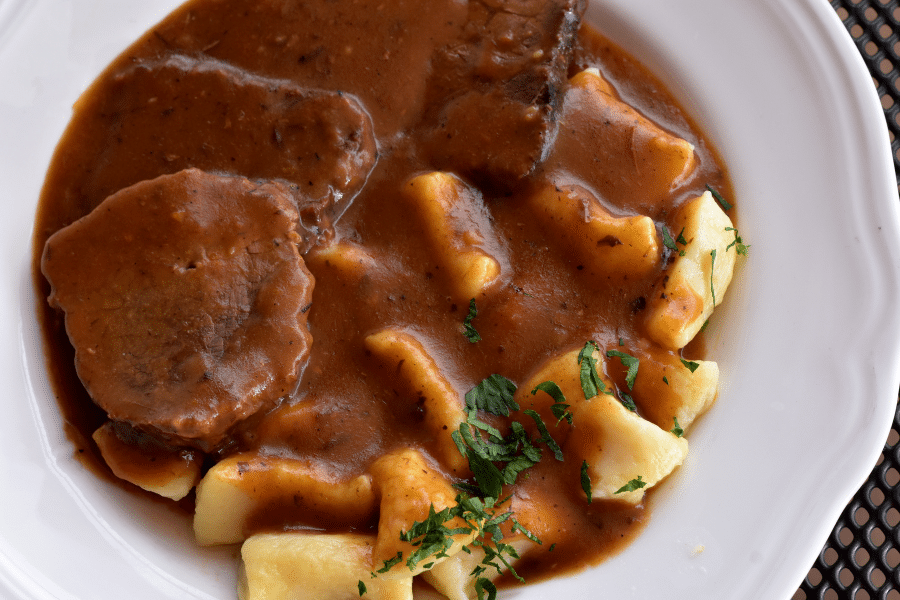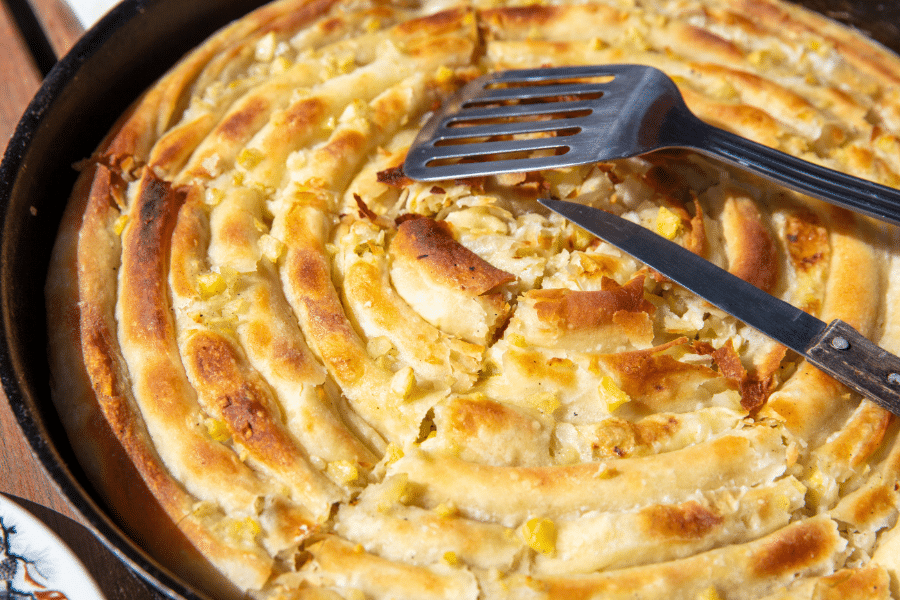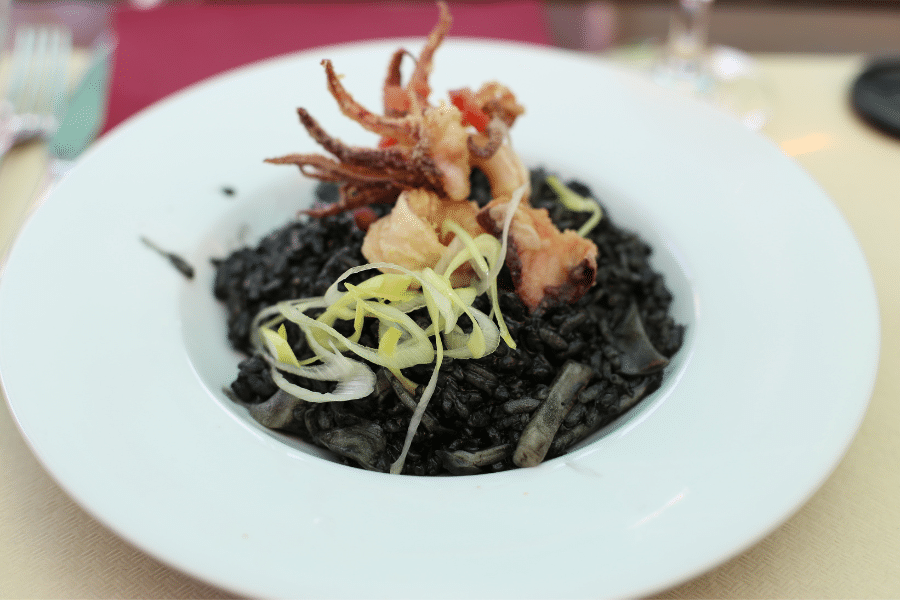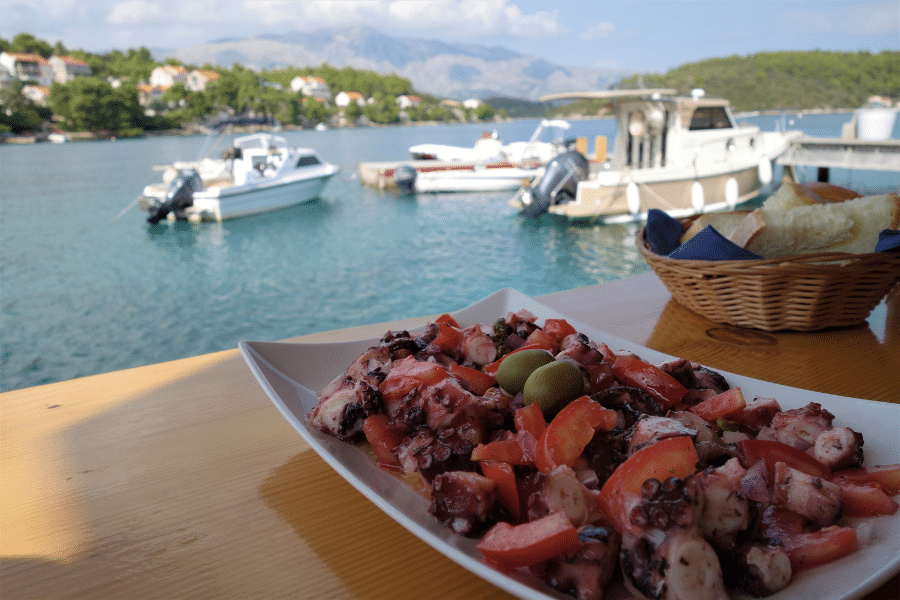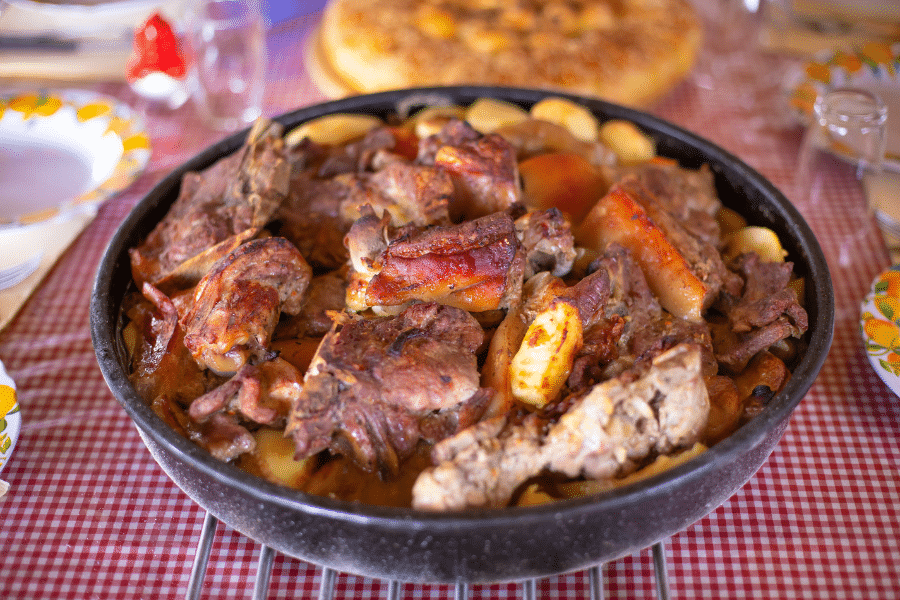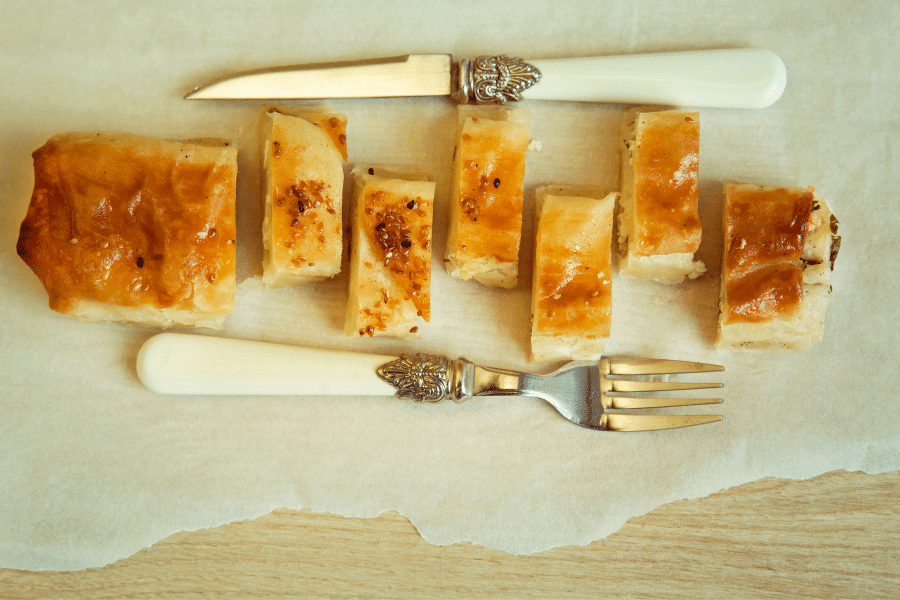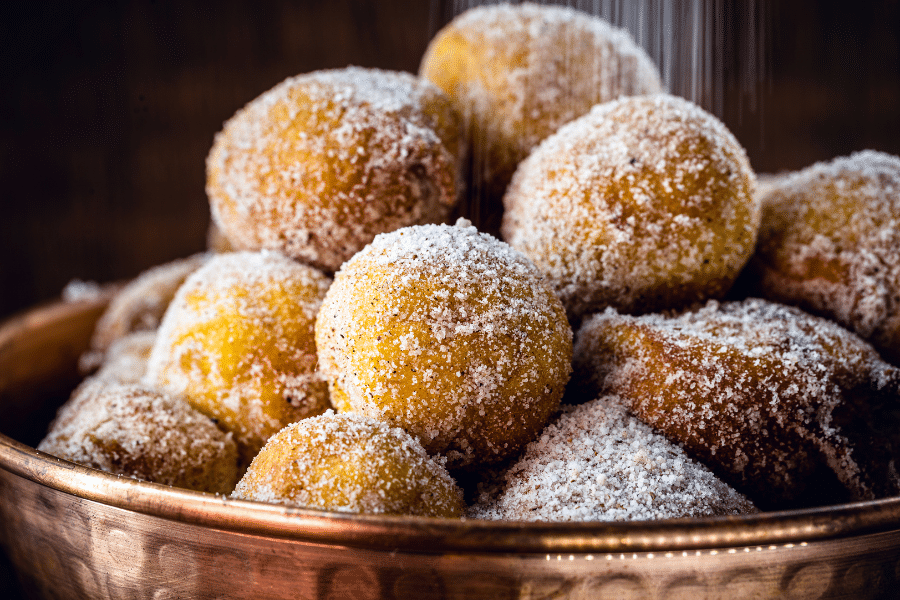Croatian food’s focus on fresh, locally-sourced ingredients has led to a thriving culinary scene that combines seafood, meat, and vegetables in mouthwatering dishes. From comfort food to sea delicacies, Croatians are masterful at showcasing their country’s seaside location and Balkan traditions in their everyday food.
Whether you’re visiting Croatia’s stunning coastal regions or the heart of its inland territories, you’ll find an abundance of flavorful and hearty dishes to indulge in. Seafood lovers will relish in the country’s fresh catch of the day, while meat aficionados will appreciate the savory stews and grilled specialties.
Croatian cuisine is deeply intertwined with the country’s culture and identity, passed down through generations, and celebrated in households across the land. The international community has also taken notice, with Croatian dishes gaining widespread recognition in food blogs, cookbooks, and culinary magazines. So what are you waiting for? Get ready to taste the delicious flavors of Croatia.
In this article, we will explore some of the most popular dishes in Croatia, including their origins, ingredients, and cultural significance.
Croatian food overview
Some of the most popular dishes in Croatia include slow-cooked meat stews marinated in red wine and vinegar, savory pastries filled with meat, cheese, or vegetables; squid, octopus and fish, grilled meats served in pita bread; and sweet fried doughs to die for. These dishes offer a diverse range of flavors and reflect the rich culinary traditions of the various regions of Croatia.
The most popular dishes in Croatia
1. Pašticada
Pašticada is a traditional Croatian stew that originates from the Dalmatian region. The dish dates back to the 15th century and was traditionally served during celebrations and special occasions. Pašticada was initially made using horse meat, but it is commonly made with beef today.
Pašticada is made by marinating beef in red wine and vinegar for several days. The beef is then slow-cooked with vegetables such as onions, carrots, and celery and flavored with spices such as bay leaves, cloves, and cinnamon. The dish is typically served with gnocchi or homemade pasta and topped with a sauce made from the cooking liquid, beef broth, and a touch of tomato paste.
Pasticada is a beloved comfort food in Croatia, and it is often served at weddings, christenings, and other important events. The dish is typically prepared over the course of several days, making it a labor of love for the cook.
It symbolizes Croatian hospitality and tradition and is often served with a glass of red wine or a shot of rakija, a traditional Croatian brandy. This is a must-try dish for anyone visiting the Dalmatian region, and its rich, savory flavors will leave a lasting impression.
2. Burek
One dish that should be on every foodie’s list visiting or relocating to Croatia is burek. This savory pastry has a fascinating history, believed to have originated in the Ottoman Empire and later spread to the Balkans, including Croatia.
It’s made with layers of flaky phyllo pastry filled with delicious ingredients like meat, cheese, spinach, or potato, creating a mouthwatering combination of textures and flavors.
Burek is a popular street food in Croatia; you can find it in bakeries and cafes across the country. It’s perfect for breakfast or snacks and is often served with yogurt or sour cream. Burek has become a cultural icon in Croatia and is often associated with family gatherings, celebrations, and holidays.
Don’t leave Croatia without trying this delicious pastry. Burek is just one example of the rich and diverse culinary offerings that Croatia has to offer. Get ready to tantalize your taste buds with the flavors of this beautiful country.
3. Black risotto
Black risotto, or “crni rižot” in Croatian, has its roots in the coastal region of Dalmatia, where it was traditionally made using squid ink. The dish is striking black, which comes from the ink used to prepare it.
The dish is typically made with rice, squid, and other seafood, such as shrimp, mussels, or clams, combined with a delicious blend of herbs, garlic, onion, and olive oil. The key ingredient, however, is the squid ink, which adds a unique flavor and depth to the dish.
Black risotto is often served as a main course, accompanied by a glass of local white wine. It’s also a popular dish during festivals and celebrations along the coast.
Beyond its delicious taste, black risotto holds cultural significance as a traditional Dalmatian dish passed down through generations of Croatian families. For visitors, it’s an opportunity to experience the country’s culinary history and culture.
4. Octopus salad
Octopus salad is a popular appetizer in Croatia, often found on seaside restaurant menus. This dish has a long history in the country, with the first written record of the recipe dating back to the 19th century.
Octopus salad is made with a boiled octopus that’s thinly sliced and mixed with onions, garlic, parsley, and olive oil. Some variations of the dish include capers, tomatoes, or even potatoes. The combination of the octopus’s tender, slightly chewy texture and the tangy, fresh flavor of the herbs and vegetables create a delicious and refreshing appetizer that’s perfect for a hot summer day.
Aside from being a delicious and healthy appetizer, octopus salad also holds cultural significance in Croatia. The country has a long tradition of fishing, and seafood dishes like octopus salad reflect the coastal lifestyle and the close relationship that Croatians have with the sea.
5. Cevapi
The origin of cevapi is disputed, with some sources claiming that it was brought to the Balkans during the Ottoman Empire, while others believe that it has Slavic roots. This grilled meat dish has become a staple in Croatian cuisine regardless of its origins.
Cevapi is made from ground beef and lamb seasoned with spices like paprika, garlic, and onion. The mixture is formed into sausage-shaped portions and then grilled until they’re crispy on the outside and juicy on the inside.
Traditionally, cevapi is served with a side of onions, ajvar (a roasted red pepper spread), and kajmak (a creamy dairy product). It’s typically eaten with pita bread, which wraps the cevapi and creates a tasty handheld meal.
Cevapi is more than just a popular food item in Croatia; it’s also an essential part of the country’s cultural identity. It’s often served at family gatherings, weddings, and other celebrations and has become a symbol of Croatian hospitality.
6. Peka
Peka, the national Croatian dish, has a rich history rooted in Dalmatian cuisine. This hearty meat dish typically features succulent lamb or veal, onions, potatoes, and a blend of fragrant herbs. But what truly sets Peka apart is the way it’s cooked.
Slowly cooked under a bell-shaped dome known as a peka (bell), which is buried in hot coals, this dish develops a smoky, earthy, irresistible flavor. This unique cooking method dates back to when rural communities in Dalmatia prepared meat over open fires, and Peak was the preferred way of cooking meat for special occasions such as weddings and family gatherings.
The cooking process involves tedious labor, as the ingredients are carefully layered in a shallow dish, then covered with a dome made of metal or clay before being placed in a pit of hot coals. The slow cooking process, lasting several hours, ensures that the flavors meld together perfectly and the meat becomes melt-in-your-mouth tender.
You’ll taste the rich, hearty, and full-bodied flavors that make Peka a very popular Croatian classic with one bite of this mouthwatering dish.
7. Struklji
Struklji is a popular cheese dish that originates from Zagreb, the capital city of Croatia. This mouthwatering pastry has been around since the 18th century and is a staple in Croatian cuisine.
The dough is prepared using flour, eggs, and water and then layered with fillings such as cottage cheese, sour cream, spinach, or meat. Once rolled and cut into bite-sized pieces, it’s baked until crispy and golden.
Struklji isn’t just a tasty pastry; it holds significant cultural significance for Croatians. It’s a dish passed down from generation to generation and represents the rich culinary heritage of Zagreb and Croatia. It’s so loved that there’s even a Struklji festival held annually in Samobor. So, why not try this delicious dish and experience a little piece of Croatia for yourself?
8. Fritule
Fritule is a traditional Croatian dessert typically served during holidays and special occasions. The dish’s origins can be traced back to ancient Roman times. The recipe was then passed down through generations and has become a staple in Croatian cuisine.
The fritters are a popular dessert typically served during holidays and special occasions like Christmas and Easter. They are often enjoyed with a cup of coffee or a glass of sweet wine and are a favorite among children and adults. Fritule is also commonly found at street fairs and festivals throughout Croatia, where they are served fresh and warm from the fryer.
Fritule is a delicious and traditional Croatian dessert that has become a beloved part of the country’s cuisine. Whether you enjoy them during a holiday or at a local street fair, they will surely delight your taste buds and leave you wanting more.
Other Croatian foods to try
Croatia’s culinary scene has something for everyone, from meat lovers to seafood enthusiasts. With its focus on fresh, locally-sourced ingredients and traditional cooking methods, Croatian cuisine offers diverse flavors that reflect the country’s rich culinary traditions.
Other popular Croatian foods to seek out are: manestra, soparnik, stuffed peppers, sarma, and the Zagreb schnitzel, just to name a few.
These dishes not only provide a delicious culinary experience but also offer insight into the country’s culture and identity. Many of these dishes have been passed down through generations, celebrating the Balkan culinary history. Visitors to the country can enjoy these dishes in local restaurants and cafes, as well as in Croatian households, experiencing the warmth and hospitality of the Croatian people.

